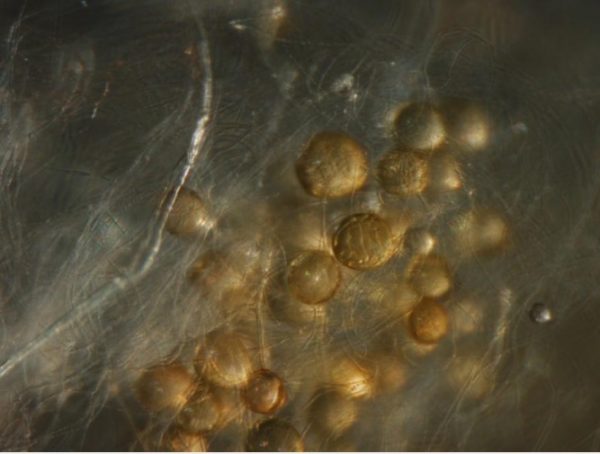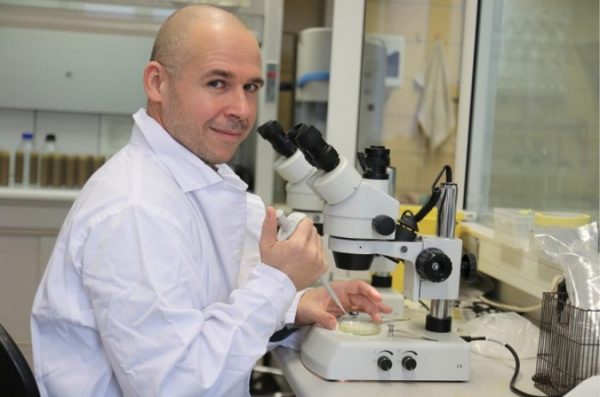Coal dumps, an inherent element of Upper Silesian landscape, are mainly perceived as a risk, because they may cause pollution of surface and deep waters, as well as air. For scientists, however, they are a huge research field, a kind of laboratory where they search for the causes of changes in vegetation under the impact of anthropopressure. They are also a source of guidance for supporting the process of revitalising post-industrial areas.
In May 2019, the research team under the guidance of Prof. Gabriela Woźniak from the Institute of Biology, Biotechnology and Environmental Protection of the University of Silesia completed the research project entitled “System supporting the revitalization of mining waste dumps using geoinformatic tools” (National Centre for Research and Development, Tango programme), whose basic aim was to develop the method enabling to take optimum decisions concerning the reclamation and development of dumps. The scientists focused on recognising the biological processes taking place spontaneously in the dump areas, which allowed to identify the ways to strengthen and accelerate them. During four-year research, the scientists collected samples from several Silesian coal dumps. The dump resources proved to be a repository of species diversity. The interdisciplinary team included specialists in the field of urban vegetation, peatbogs, post-industrial areas, plant physiology, microbiology, physiochemical analysis of soil, soil enzymes and mycorrhizas. The researchers were joined by microbiologist, Dr. Franco Magurno, graduate of the University of Turin.
Mycorrhiza
Before Dr. Franco Magurno joined the work of the team at the University of Silesia, he had conducted research at the Szent István University in Gödöllő (Hungary) for several years. His scientific interests are focused on the issues related to mycorrhiza, a phenomenon consisting in coexistence of roots or seeds of vascular plants with fungi. Thanks to this “cooperation”, fungi help plants e.g. get water and mineral salts, obtaining photosynthetic products (mainly carbohydrates) from plants in return. Nearly all terrestrial plants on Earth (90-95 per cent) form mycorrhiza with fungi.
The scientist particularly focused on arbuscular mycorrhiza, i.e. phenomenon when mycelium in the form of the so-called hyphae penetrates inside the plant root cells. Characteristic for this type of mycorrhiza are arbuscules produced as side branching of fungal hyphae inside plant cells. They have a treelike shape and are closely surrounded by plant cell membrane, which significantly increases the surface that constitutes the substance exchange zone between both partners. In the opinion of Dr. Magurno, arbuscular mycorrhiza is the most primary type of mycorrhizal symbiosis that takes place between fungi and plants. It is most likely thanks to this symbiosis that plants “arrived” on land.
‘Plants would not have colonised the land without fungi. It turns out that a significant part of plant genome comprises genes responsible for synthesis of proteins which attract fungi towards the plant roots. Mycorrhizas are very important from the point of view of plants, because they help them survive in difficult conditions, e.g. during a drought or lack of microelements’, explains the microbiologist.
Arbuscular fungi are also capable of preventing infections caused by pathogenic fungi, protecting plants against many dangerous diseases. It is no wonder, then, that the advantages of mycorrhiza are particularly appreciated by the agricultural sector, which is a big challenge for scientists – to search for such strains that, while supporting plants, will most effectively stimulate their development and protect them against various kinds of pathogens.
The increasingly perceived climate changes also force us to search for effective methods of combatting their effects. A large part of the world already faces the lack of proper irrigation. Long-term droughts have a negative impact on plant development and are becoming the reason for many diseases which are dangerous for them. All continents are threatened by desertification, which is the effect of e.g. intense use of fertilisers and pesticides, as well as drainage, which consequently lead to soil degradation. Samples collected from coal dumps contain very rich research material. Plants living on mining waste dumps face similar problems to plants growing in areas that are becoming desertified. They have to survive under stress conditions related to shortage of water, microelements and nutrients. The gathered information concerning the relations between vegetation, its richness, variety, biomass and substrate on coal dumps can be used with reference to equally difficult areas. In particular, the fungi which occur on coal dumps can be used in agriculture on a large scale. Therefore, as explained by Dr. Franco Magurno, the idea came up to isolate them from mining dumps, and then use their strains in other sites.
Rhizoglomus silesianum

The catalogue of arbuscular fungi was expanded by Rhizoglomus silesianum. Dr. Franco Magurno isolated it from materials obtained from the mining dump of “Makoszowy” coal mine (near Sośnica node). This large coal dump, partly unreclaimed, is particularly valuable for researchers, because of the spontaneous succession process that takes place within it. A part of the mining dump was left without human support, so that succession occurs in it independently. And it was exactly there, in the environment with high salinity and small amount of water, i.e. drought stress conditions, that Rhizoglomus silesianum appeared. It may turn out that it will be isolated by a different scientist in the other end of the world in a while, but Rhizoglomus silesianum has already been established in the specialist literature (the article written jointly with Prof. Janusz Błaszkowski from the Department of Plant Pathology at the University of Agriculture in Szczecin was published in „Mycologia” journal).
The advantages of Rhizoglomusa silesianum have already become known to the world. There is a chance (negotiations are in progress) that it will replace fertilisers and pesticides on the other hemisphere. “Production” from grafting plant seedlings with fungus to its multiplication lasts approximately 3 months. Once it’s in soil, it multiplies by itself.
Carbon dioxide reduction
Dr. Franco Magurno continues his scientific passion with another research project. He is a member of the team led by a specialist in environmental microbiology, Prof. Zofia Piotrowska-Seget from the Institute of Biology, Biotechnology and Environmental Protection at the University of Silesia. The project entitled “Assessment of dependence between plant diversity, structure of microbial communities and carbon balance during spontaneous succession in post-mining sites using metatranscriptomic analyses” (National Centre for Research and Development, Opus programme) is in line with the global fight against excess carbon dioxide in atmosphere. Scientists from the University of Silesia conduct research on various plant communities in Silesian coal dumps and related microbial soil communities. The purpose of the project is to gather information about the mechanisms affecting carbon storage in soil.
When calling for reduction of carbon dioxide in the atmosphere, we are usually limited to telling that it’s necessary to close coal-fired power plants, eliminate black-smoke-belching stoves from the households, combustion engines, etc. However, scientists have noted that as much as 2/3 of the entire carbon is deposited in soil, which is why we should take action to reduce carbon concentration in the atmosphere, place and bind it in soil. This is a task for plants and microorganisms. Plants provide carbon in their biomass, whereas microorganisms transfer carbon to soil by decomposing the plant debris. The study of composition, operation and activity of microbial soil communities was planned based on the metatranscriptomic analysis. It is an advanced molecular technique which consists in isolation of total RNA from soil and its sequencing. Contrary to DNA, RNA is only present in the living cells of microorganisms, so apart from their biodiversity, RNA sequencing will allow to recognise the groups of microorganisms which are the most important active “players” related to the dominating plant species and higher carbon content in soil. The research results will provide information allowing to implement an effective strategy for restoring post-mining dumps, which at the same time will act like sponges absorbing carbon.
‘This is why it’s so important for us to search for strains in the environments that are interesting for researchers. Their isolation and introduction not only supports reclamation, but also helps to remove pollution’, explains Dr. Magurno.
Maria Sztuka
The article entitled „Fungi instead of Pesticides” was published in „Gazeta Uniwersytecka UŚ” 2019, no. 3 (273).






